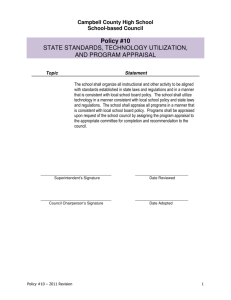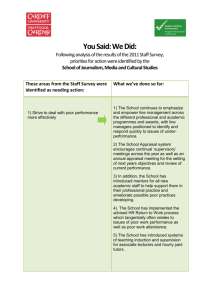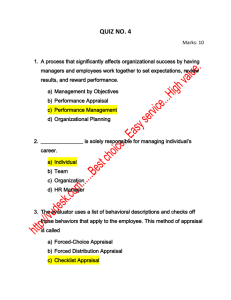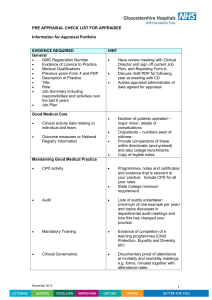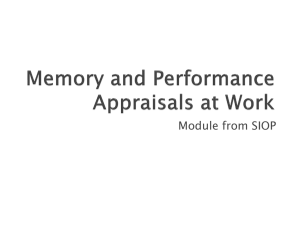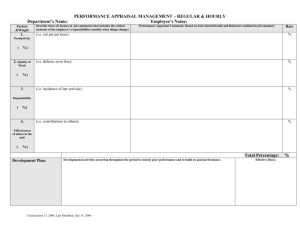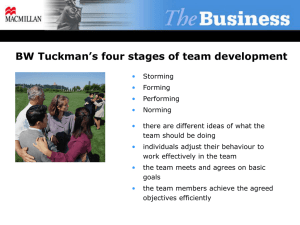Whole Life Appraisal Approach
advertisement
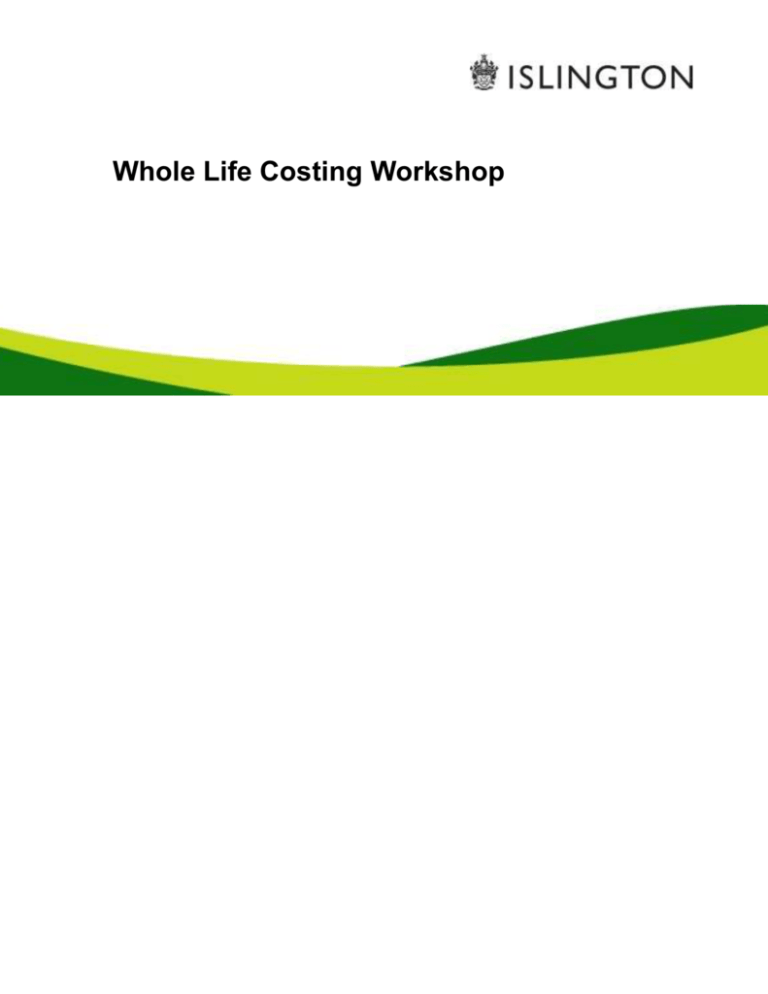
Whole Life Costing Workshop A Whole Life Appraisal Approach Introduction Procurement decisions are commonly made examining the ‘most economically advantageous tender’. The concept behind this is to take account of cost and qualitative issues to achieve a suitable balance and demonstrate value for money in any decision made. The problem is in many cases that this decision is based purely on the cost and quality measured at day one of a project rather than a full evaluation of these components over the full life. It is possible that when these ‘whole life’ considerations are taken into account that a ‘value for money decision’ in the short term would not be the most suitable option over the longer term. The problem with whole life evaluation is that the future is so uncertain. In hindsight, simple assumptions and projections made in good faith can often be seen to be flawed. This could be because service practices, technology, energy costs, or demographics change often in short timescale. So, with numerous unknowns and variables, is whole life appraisal worthwhile? John Maynard Keynes, once stated that “It is better to be almost right, than completely wrong”, and this is very much the approach adopted in this document. Whilst extreme detail may be considered a waste of time and effort, a broader approach to whole life is essential to ensure that significant issues are taken into account. Options The document sets out a proportional approach to whole life appraisal dependent on the following values. Approach 1 - Schemes below a value of £70,000 Approach 2 - Schemes £70,000 up to £500,000 Approach 3 - Schemes over £500,000 Some schemes of a low value may have a high strategic sensitivity and as such a more detailed whole life approach could be applied. For example a scheme under £70,000 may have a significant strategic impact or relatively high on-going costs, it may be more appropriate to use Approach 2 or 3 for this occasion. It would be up to the project team to consider the impact of any scheme to ensure that full consideration of whole life issues is undertaken. Time periods for Whole life Appraisal The first consideration is to decide what period of time the Whole life Appraisal would be considered over. PFI schemes for example usually consider costs over a period of 30 years which may be impractical and unrealistic for smaller schemes. Two questions must therefore be asked. 1. What is the life expectancy/need for the service; and 2. How long is the design life of the solution/building? For example, if we consider a building’s life can be 40 years, the service it is originally designed for may be anticipated to be delivered for 10 years from that location. This leaves 30 years to do something else with the building and would make a simple whole life appraisal based on the service alone unrealistic. One solution would be to simply consider the whole life over a 10 year period allowing for disposal costs after that timescale. Another option could be to increase the initial expenditure on the property to allow flexibility and change of use after the initial 10 year period has transpired. This consideration is not confined to buildings alone, IT solutions, vehicles, plant and equipment will all have a defined life that needs to be set against service requirements. Often the setting of these parameters alone makes more of an impact on the resultant whole life consideration than any other part of the process. Where a maximum service life can not be ascertained, the whole life appraisal should be conducted over a maximum of 20 years unless funding obligations or particular scheme specific circumstances dictate otherwise. When should whole life appraisal be undertaken? The diagram below demonstrates how whole life evaluation will have more influence on a project the earlier it is carried out in the overall timescale. Whilst the example is related to construction, the principle applies to any type of project. Diagram 1: The funnel effect of whole life evaluation For the purposes of this guide it is suggested that whole life appraisal is carried out at two distinct points in time. 1. At the initial project outline business case that will be submitted for corporate capital prioritisation, and; 2. At a more detailed option appraisal stage when the project and relevant funding has been approved. The appraisal for outline business case needs to be reasonably simple, but must incorporate major whole life issues for consideration. In most cases the Approach 1, used for schemes under £70,000 will suffice for this initial consideration. What should be taken into account? To be effective elements of both cost and quality need to be considered as part of the whole life appraisal. A successful whole life appraisal should not necessarily produce the most economic solution over the life of the service. Increased costs to facilitate contribution towards corporate aims and objectives may also be a valid outcome. Cost areas for consideration could include: 1. Initial Capital Costs 2. Procurement Costs 3. Rent 4. Facilities Management 5. Energy and water Costs 6. Maintenance (planned and reactive) 7. Cleaning 8. Financing costs 9. Opportunity cost 10. Refurbishment & Refit (including associated ‘downtime’ costs) 11. Staff, other Equipment & Security costs 12. Disposal value or Demolition/De-commissioning costs Qualitative considerations are many and too numerous to provide a fully comprehensive list but they could include 1. Use of higher specification products to reduce maintenance, replacement or cleaning 2. Use of produtcs to minimise energy use and environmental impact. 3. Use of products/services that are sourced locally or the ongoing maintenance would be sourced locally. 4. Use or siting of products/services to encourage sustainability. 5. Increase in specification to provide more flexibility in future service provision 6. Increase in design to reduce need for security or prevent vandalism 7. Use of materials from renewable sources that may have an increased cost consequence over the service life. In practice qualitative issues will be dictated by corporate and service aims objectives and any evaluation must be conducted with reference to these and any other relevant policies and procedures. The Project Team Whole life appraisal should not just be the domain of accountants or quantity surveyors. To ensure that all issues are taken into account it is essential that relevant stakeholders are included within the evaluation. Often unforeseen costs in use or qualitative issues will be identified by service delivery staff which would never have been considered if left to technically based staff. Indicative suggestions for the make up of a project team are included under each approach contained within the appendices to this document. Discount Rates (Net Present Value) Due to the fact that costs over varying periods of time need to be compared, it is essential that a ‘discount rate’ is used to translate future costs into current day values. The treasury Green Book currently recommends a discount rate of 3.5% for projects up to 30 years. CIPFA however, advocate the use of a range of rates, to test whether they make any difference to relative priorities. For the purpose of this guide the treasury standard discount rate is assumed unless it is an individual authorities practice to use another rate, or scheme specific requirements dictate otherwise. In practice it will be up to any finance representation on the project team to undertake net present value calculations but a basic understanding of the concept is necessary for all team members.

